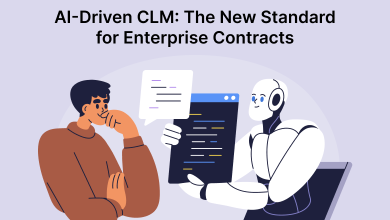
Many legal teams now rely on AI to process traffic incident data faster and with more accuracy than before. Today, a reported 64 percent of law firms use AI tools to analyze all evidence they receive, predict outcomes, and streamline claims. It’s a tech-evolution shift that transforms how you reconstruct crashes, assign fault, and win stronger settlements; step by step.
1. Basic Crash Reconstruction with Algorithmic Insight
You use AI-powered reconstruction tools like PC‑Crash or FARO (for measurement and imaging) paired with machine learning to rebuild a more accurate depiction of the crash scene. These platforms can analyze sensor inputs, GPS logs, and crash photos to help you simulate vehicle trajectories and points of impact. They can also give you precise scenarios that are hard to contest in courts today. Experts confirm that forensic AI platforms, like Arity and Rekor, can even fill in missing data to accurately reconstruct incident timeliness.
2. Computer-Vision Damage Assessment
As a legal professional, you can now leverage AI tools like Tractable or Nexar that process dashcam or scene images to detect damage severity, impact zones, and visual fault markers with more accuracy. Algorithms these days, especially those trained on millions of images, can now flag high‑risk patterns in seconds. One industry report even noted that about 60 percent of auto claims now flow through photo‑based AI estimates, and that’s up from 15 percent before 2021. It’s where insurers see up to 30 percent greater adjuster productivity.
3. Case History Analytics for Claims Comparison
Following the core principle of stare decisis, courts will always appreciate your efforts to search past verdicts and legal outcomes, which could become savvy if you’re using legal analytics platforms like Lex Machina. It’s where you can accurately compare past personal injury outcomes or liability rulings in similar crash types against what you’re building with the present case. Tools like these can mine millions of case records to show trends in damages or fault attribution across jurisdictions instantly.
Today, you’re no longer too helpless even if you’re somewhere in South Carolina, and you meet with an accident. You’ll find that modern analytics significantly outshine older methods and can easily help you hook up with an auto accident attorney Columbia. They’re more experienced with the legal innuendos in their community and can competently assess cases via more advanced tools, giving you accurate estimates of settlements and liability.
4. Predictive Modeling for Fault and Damages
When you’re a law firm in today’s tech-savvy world, you build predictive models using machine learning. It’s where you can estimate likely fault apportionment and damages based on variables like weather, vehicle type, speed, time of day, and historical patterns in the accident scene.
Some legal teams now use e‑discovery platforms that integrate prediction to forecast case results, and could be your best tool, too.
5. Automated Evidence Summaries & Document Analysis
When you harness tech, you can feed police reports, medical records, witness statements, and even dashcam transcripts into AI tools that summarize facts, flag inconsistencies, and draft outlines of your case’s event sequence. That saves your attorneys hours of reading and the costs involved in report (and research) reproduction.
Today’s generative AI assistants, like Harvey, Copilot, or reputable legal LLMs, can review (for you) thousands of pages and extract key points fast for your final presentation. A General Counsel Report even found adoption of generative AI to have risen to 44 percent in 2025 from under a third the year before.
6. Visual Timeline Dashboards & Legal Reporting
You can now turn raw incident data into dashboards showing time‑based visual stories that could be very material to your client’s claims. Trends in case timing, injury severity distributions, or defendant responses become actionable reporting without breaking your legal engagements.
Legal data analysis tools these days can already help teams to forecast needs, identify repetition patterns, and present visuals aligned with firm goals.
7. e‑Discovery & Precedent Search Enhanced by AI
You can now effectively employ AI for e‑discovery to fish through large volumes of documents, transcripts, and prior cases to find precedents, regulatory information, or similar automotive‑liability rulings from courts all over the United States. With AI, search speed and accuracy are remarkably improved, with many platforms boasting up to 95 percent precision.
8. Cost Estimation and Settlement Optimization
You can harness the efficiency of AI cost estimates derived from local repair cost databases, parts pricing, labor norms, and inflation trends—integrated into analytics tools to forecast a fair claim value for each of your cases. These estimates can provide stronger negotiation support and reduce surprise adjustments later, from the claims process to court resolutions.
Final Take
You’re not just using the advancement in AI; you’re rewriting how you handle your cases, especially traffic incidents, and transforming raw traffic incident data into airtight claims or cases. It’s also where you can competently impress insurers, judges, and juries because what you submit rests on proven strategies.
Adopting these innovative ways helps transform your legal toolkit into a precision engine where you stay efficient, strategic, data‑driven—and your clients feel the shift.




